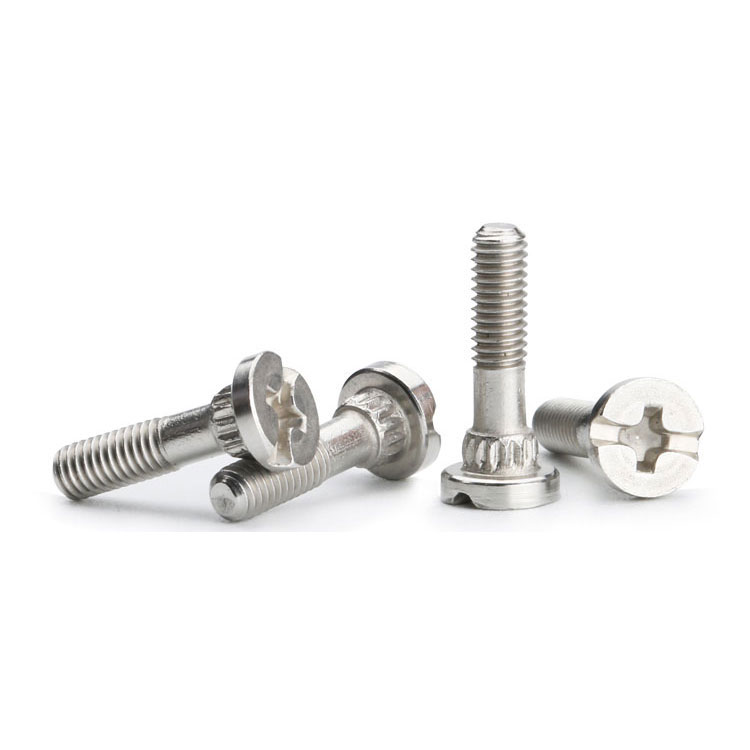Phillips Slot Combination Screw
At first glance, the main difference between a flathead screwdriver, or more properly called a slotted or flat blade screwdriver, and a Phillips screwdriver should be patently obvious. A flathead has a single blade, and a Phillips has two blades in the shape of a cross. Attempts to use a flathead tool on a screw designed for a Phillips usually won't be successful, and a Phillips screwdriver could never be used on a slotted screw. Both are considered 'driver' tools, which means they are used to force bolts or screws through various types of material.
- Phillips Slot Combination Screwdriver
- No Slot Screws
- Combination Wood And Machine Screw
- Screw Slot Sizes
There are differences beyond the blade shapes, however. The flathead has been in use far longer than the Phillips. When screws began to replace hammer-driven nails in the manufacturing process, the single slot screwhead was almost universal. A flathead screwdriver became an indispensable tool for woodworkers and other commercial artists. This version is still considered the default model to this day, even with its inherent problems.

The Phillips screwdriver, by comparison, is still a rather new tool option. Invented by Henry Phillips, a tool company owner working in the 1930s, the screwdriver and accompanying screws were intended to provide a safer alternative to the traditional flathead. Henry Phillips wanted a screwdriver that would prevent a damaging process called overtorquing.

Phillips Slot Combination Screwdriver
Traditional screwdrivers at the time often allowed the user to put too much twisting force, or torque, on the slotted screws. By designing a cross-shaped blade and corresponding cross-shaped screws with a slight depression, Phillips could apply more torque than with a flathead. This mechanical advantage allows users to use their twisting strength more efficiently. The depressions in the screws, however, forced the blades of the Phillips to slip out before any damaging overtorquing could occur.
No Slot Screws
- Phillips Slotted Drive Oval Countersunk Head Machine Screw; Phillips Slotted Drive Round Head Combination Machine Screw; Phllips Slotted Drive Truss Head Combination.
- Captive Screw, M3 X 0.5, Surface Mount Technology, Phillips/Slot Combination, Knurled Bright Knob.
- Combination Slotted/Phillips Machine Screws. Machine screws are used to secure panels and parts through existing, tapped holes on electronic equipment, engines, and large machines. Fillister and cheese head screws have deep slots to allow increased driving power. Flat head machine screws lie flush with the material surface.
- Vintage S-K Tools Phillips & Slotted Screwdriver 6 Made in USA. SK 86326 6 Piece SureGrip Screwdriver screw driver Set made in USA Brand New. SK Hand Tools 86006 9pc SureGrip® Combination Screwdriver Set. SK 2 in 1 Pocket Screwdriver, Flat & Phillips, Made in the USA.


Browse Combination Slotted-Phillips® Head Screwdriver Bits in the ASG, Division of Jergens, Inc. Catalog including.
One flaw in the flathead design is the relative strength of the blade, or bit. When a flathead bit is attached to a powered driver, the added force can cause a weaker blade to snap off. In addition, the slotted screw may become stripped if too much torque is applied. This is why the use of the flathead screwdriver is generally limited to woodworking and other light-to-medium industrial applications. Only the strongest flathead driving bits are used for high-torque manufacturing processes.
Combination Wood And Machine Screw
By comparison, a Phillips screwdriver is very well-suited for industrial processes. Once the Phillips bit is seated securely in the Phillips head screw, the operator can apply much more torque for fastening. Since the screw will force out the bit at the first sign of overtorquing, there is less risk of damage to the product or the bit.
Screw Slot Sizes
Some modern screws accept both flathead and Phillips screwdrivers, although some experts suggest using a Phillips for tightening and a flathead for loosening the screw. One advantage a flathead has over a Phillips, however, is universality. In case of emergency, a number of other flat metal objects, such as coins, butter knives or keys, can be used to tighten or loosen a screw. It is much more difficult to duplicate the fit of a Phillips head.